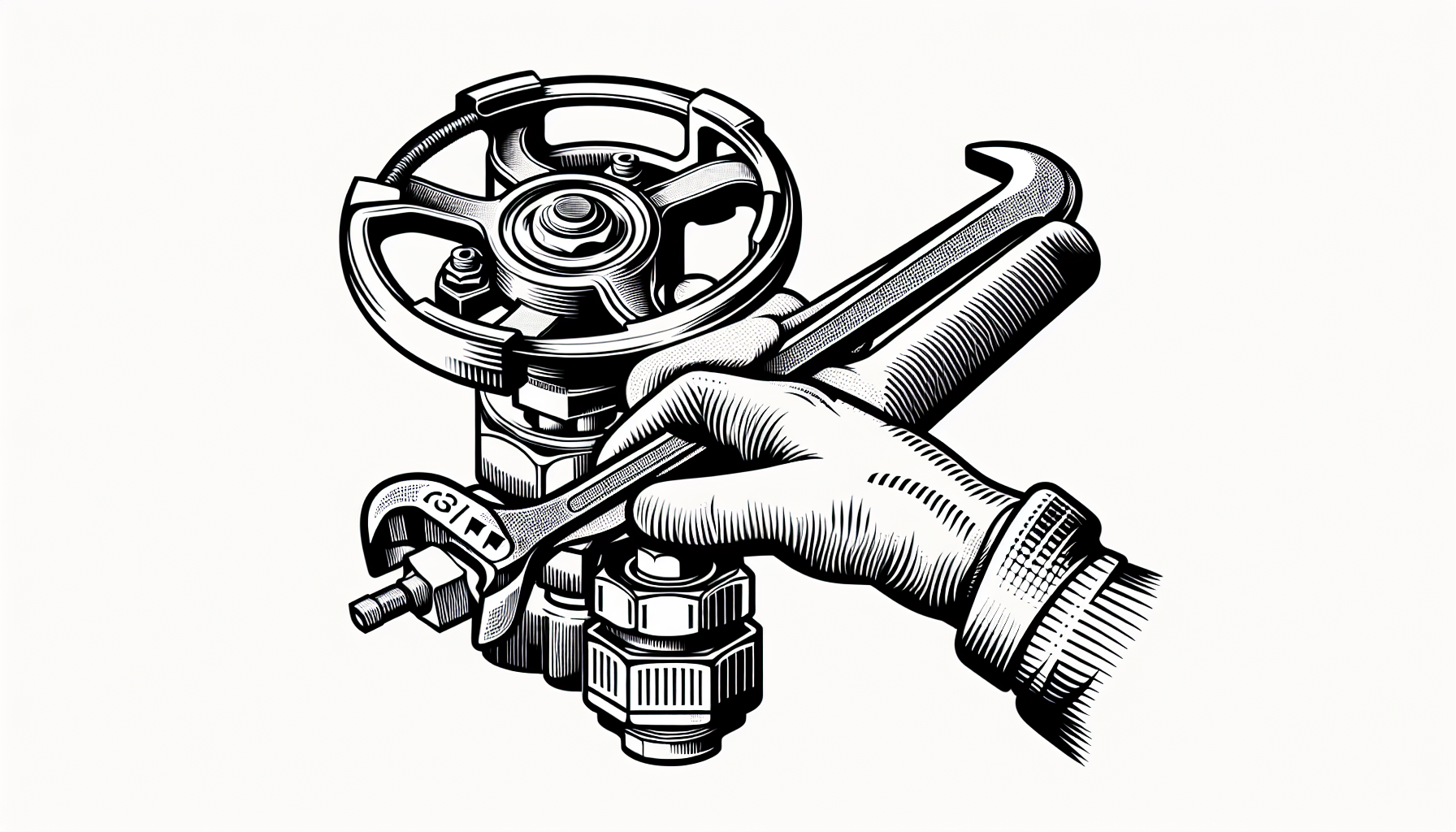So you’ve just finished replacing that leaky faucet in your bathroom, feeling quite accomplished. But now you’re faced with the challenge of removing the excess plumbers putty that stubbornly clings to your hands and tools. Fear not, for this article will enlighten you on the magical methods that effectively break down plumbers putty. Whether you’re a DIY enthusiast or simply curious about the wonders of this adhesive substance, read on to discover how to bid farewell to plumbers putty with ease and finesse.
Introduction
Plumbers putty is a versatile and essential tool for all your plumbing needs. Whether you’re fixing a leaky faucet or installing a new sink, plumbers putty comes to the rescue. However, like any other material, plumbers putty is not immune to breaking down over time. In this article, we will explore the various factors that can contribute to the breakdown of plumbers putty and discuss how to prevent and address these issues.
Chemical Properties of Plumbers Putty
Composition
Plumbers putty is typically composed of a blend of clay, mineral oils, and fillers. These ingredients work together to create a pliable and adhesive substance that can be easily molded and shaped. The specific composition may vary depending on the brand and formulation of the plumbers putty.
Function
The primary function of plumbers putty is to create a watertight seal between two surfaces. It acts as a barrier, preventing water from seeping through gaps and joints. Plumbers putty is commonly used in plumbing installations, such as sealing drains, faucets, and sinks.
Common Uses
Plumbers putty has a wide range of applications in the plumbing industry. It is commonly used to seal sink and bathtub drains, attach faucets to sinks or countertops, and secure the base of toilets to the floor. Its versatility and ease of use make it a go-to solution for many plumbing projects.
Factors That Can Break Down Plumbers Putty
Temperature
Extreme temperatures can have a significant impact on the integrity of plumbers putty. Both extreme heat and extreme cold can cause the putty to break down and lose its effectiveness. It is important to understand how temperature can affect plumbers putty to ensure its longevity in your plumbing projects.
Water Exposure
While plumbers putty is designed to resist water, prolonged exposure to water can still cause it to break down. The putty can absorb water, leading to expansion and contraction, which can weaken its seal. Understanding the effects of water exposure on plumbers putty is vital in maintaining its durability.
Chemical Exposure
Plumbers putty is resistant to most household chemicals. However, exposure to certain chemicals can cause it to deteriorate. Acids, alkaline substances, and solvents can all have a negative impact on the integrity of plumbers putty. Recognizing the potential dangers of chemical exposure is essential for preserving the effectiveness of your putty.
Age
Over time, plumbers putty can naturally break down due to aging. It may dry out, harden, and lose its elasticity, becoming less effective at creating a watertight seal. Understanding the effects of age on plumbers putty can help you anticipate when it’s time for a replacement.
Impact of Temperature on Plumbers Putty
Extreme Heat
When exposed to extreme heat, plumbers putty can soften and lose its shape. This can lead to a compromised seal and potential water leaks. Therefore, it is crucial to avoid placing plumbers putty in high-temperature environments or near direct heat sources.
Extreme Cold
Extreme cold temperatures can cause plumbers putty to become brittle and less flexible. This can result in cracks or gaps in the seal, rendering the putty ineffective. It is important to protect plumbers putty from freezing temperatures to maintain its durability.
Effects of Water Exposure on Plumbers Putty
Absorption
Plumbers putty has a certain level of water absorption, and prolonged exposure to water can lead to excessive absorption. When the putty absorbs water, it expands, which can compromise the integrity of the seal. It is important to monitor the condition of plumbers putty in wet areas to prevent water damage.
Expansion and Contraction
Water exposure can also cause plumbers putty to go through a cycle of expansion and contraction. This process can lead to the putty losing its shape over time, resulting in gaps and leaks. Proper installation and regular inspections are crucial to ensuring the longevity of plumbers putty.
Chemical Exposure and Plumbers Putty
Acids
Acidic substances, such as certain household cleaners or drain cleaners, can break down plumbers putty. The acidic nature of these substances can dissolve the putty, compromising its ability to form a reliable seal. It is important to avoid exposing plumbers putty to acidic chemicals to maintain its effectiveness.
Alkaline Substances
Similarly, alkaline substances can also degrade plumbers putty. Alkalis can react with the components of the putty, causing it to deteriorate and lose its adhesiveness. It is essential to use caution when working with alkaline substances around plumbers putty.
Solvents
Certain solvents, such as paint thinner or acetone, can dissolve plumbers putty. These solvents can break down the putty, resulting in a weakened seal. It is important to keep plumbers putty away from solvents to prevent any damage.
Effects of Age on Plumbers Putty
Drying Out
As plumbers putty ages, it may dry out and harden. This can make it less flexible and more prone to cracking, compromising its effectiveness as a sealant. Regular inspection and replacement of aged putty are essential to avoid potential leaks and water damage.
Hardening
Over time, plumbers putty can harden due to age and exposure to various elements. This can lead to a loss of elasticity and diminish its ability to form a tight seal. Monitoring the condition of plumbers putty and replacing it when necessary can help prevent potential issues.
Loss of Elasticity
As plumbers putty ages, it can lose its elasticity, becoming less pliable. This loss of flexibility can result in cracks and gaps in the seal, leading to leaks. It is crucial to assess the elasticity of your putty regularly and replace it if it has become rigid.
Preventing Plumbers Putty Breakdown
Proper Application
To ensure the longevity of plumbers putty, proper application is key. Following manufacturer guidelines and using the appropriate amount of putty will help create a reliable seal. Additionally, properly preparing the surfaces and removing any excess putty will contribute to its effectiveness.
Regular Inspection and Maintenance
Regularly inspecting plumbers putty for signs of deterioration is crucial in preventing potential leaks. Look for cracks, shrinkage, or loss of elasticity. Maintaining a regular maintenance schedule will allow you to address any issues promptly and replace the putty when needed.
Removing and Replacing Plumbers Putty
Removal Techniques
When it comes time to remove old plumbers putty, there are a few techniques you can use. One common method is to gently scrape away the putty using a plastic scraper or putty knife. Chemical solvents can also be used to soften the putty, making it easier to remove. Ensure that the surface is thoroughly cleaned and dried before installing new putty.
Installing New Plumbers Putty
To install new plumbers putty, start by preparing the surface by cleaning and drying it thoroughly. Take a small amount of putty and knead it until it becomes pliable. Roll it into a thin rope shape and press it onto the desired area, making sure to create an even seal. Excess putty can be trimmed away using a utility knife. Finally, allow the putty to cure according to the manufacturer’s instructions.
Conclusion
Plumbers putty is an invaluable tool for creating watertight seals in plumbing applications. However, it is crucial to understand the factors that can contribute to its breakdown. By considering temperature, water exposure, chemical exposure, and age, you can take the necessary precautions to prevent issues with your plumbers putty. Regular inspection, proper maintenance, and timely replacement are vital in ensuring your plumbing projects remain leak-free and reliable for years to come.





